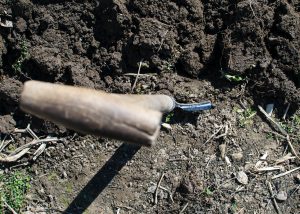November in the garden: Prune fruit trees, protect perennials & move plants

Indoor Bulbs
Indoor bulbs can be one of the real joys of winter gardening, and so long as you follow a few basic guidelines, they are easy to grow. If you start now, you still have time to plant some bulbs that will flower for Christmas or in the New Year. Hyacinths are probably the most popular – understandably, because of their wonderful combination of flowers and scent – but there are other possibilities such as narcissus.
Mildew and Damp Problems
Mild and damp weather through November may create problems with mildew or leaf disease for plants you are over-wintering in a greenhouse. Yellow or dead leaves should be quickly removed from fuchsias, pelargoniums, and other such plants. If mild conditions continue, ensure a good air flow by leaving the door open all day.
Prune Fruit Trees
This is the time to prune fruit trees like apple and pear trees. Don’t prune ornamentally shaped trees such as cordon and espalier trained trees as, once established, they are better pruned in the summer.
Moving Plants
This is a good time to move plants such as perennials and shrubs. Lift them with as little disturbance to roots as possible, and replant immediately. If you do not have an immediate new site for shrubs, heel them in until the spring.
Cover Tender Bulbs
Cover slightly tender bulbous perennials, such as agapanthus, with a frost-protecting covering of straw. This can be kept in place by pegging over a piece of wire or netting. Do not allow the straw to become sodden or rotten through the winter.

Dig the Soil
We suggested digging heavy soils a couple of weeks ago, before they became waterlogged, but this is the best time generally for digging bare soil. Autumn rain will have softened the earth, making it ready for frosts to break down clods in heavy ground through the winter, and to get in and kill bugs and bacteria. Either a digging fork, or a slightly smaller border fork is ideal.
Staking Young Trees
Newly planted, small ornamental trees usually need a support stake for the first few years, and this is the time to make sure to keep them firm in winter winds. It is a good idea to put in a stake at an angle so that the point is away from the roots and does not disturb them when removed.
Clear Up
Cutting down hardy perennial plants such as acanthus, autumn flowering anemones, and sedums will mean your borders look tidy through the winter. Clear away the cut material, as leaving it will encourage slugs.
Store Dahlias
If you grow dahlias you should be digging up the tubers to store them inside for the winter now. You should store them upside down for a week or so to let the water run out of their stems, then place them on a tray somewhere dark, dry, and frost-free.
Terracotta Pots
If you have terracotta pots, unless you know they are frost-proof, it is advisable to store them inside during the winter. The same goes for other moveable containers that are not frost-proof. As well as protecting your pots, this will also give you the opportunity to clean them off at the same time.
Protect Perennials
Tender perennials will benefit from a covering of some sort, to keep the worst of the winter cold from the crown and roots. Anything will do -from bracken and ferns, to leylandii prunings, to sand, or even a cloche.
Take Advantage of Fine Weather
If an unexpected period of fine sunny weather occurs at the time of year when we are often closed down in miserable wet conditions, take full advantage. If you have a greenhouse or conservatory, open the doors and windows during the day, and let the fresh air in. You need to close up in the evenings, but the clean air will benefit your plants greatly.
Tie in Climbers
This is the time of year when climbing plants can be pulled about by strong winter winds. To avoid this, try and make sure that loose stems, especially long ones, are securely tied in.
Clean Decorative Barks
This is the time of year that trees grown for their ornamental barks come into their own. Some of the best are birches, or Acer griseum and Prunus serrula, both of which have rich, coppery bark. Over time, dirt, lichen, and algae can make the bark become quite dull, so it is worth scrubbing it off with a brush and bucket of warm water.
Houseplant Care You have probably turned on your radiators or started lighting fires by now. If so, remember that even if your house plants are varieties that enjoy a warm atmosphere, they do not enjoy being near either a radiator or a fire because they create warm, dry air.
You have probably turned on your radiators or started lighting fires by now. If so, remember that even if your house plants are varieties that enjoy a warm atmosphere, they do not enjoy being near either a radiator or a fire because they create warm, dry air.
Brussels Sprouts
If you grow Brussels Sprouts, and they are looking like being ready for picking soon, remember that they will always have a better flavour if you leave them unpicked until after the first decent frost.
Insulate Your Greenhouse
You will be amazed by how much heat you’ll save in your greenhouse if you give it simple temporary insulation through the winter. If you heat it, you’ll save money, if you don’t, you’ll retain warmth and give extra protection to any tender plants. You need plenty of polythene ‘bubble wrap,’ and, if your greenhouse has timber frames, some kind of pins. If it’s metal you can find fastening clips that fix between bits of frame.


















